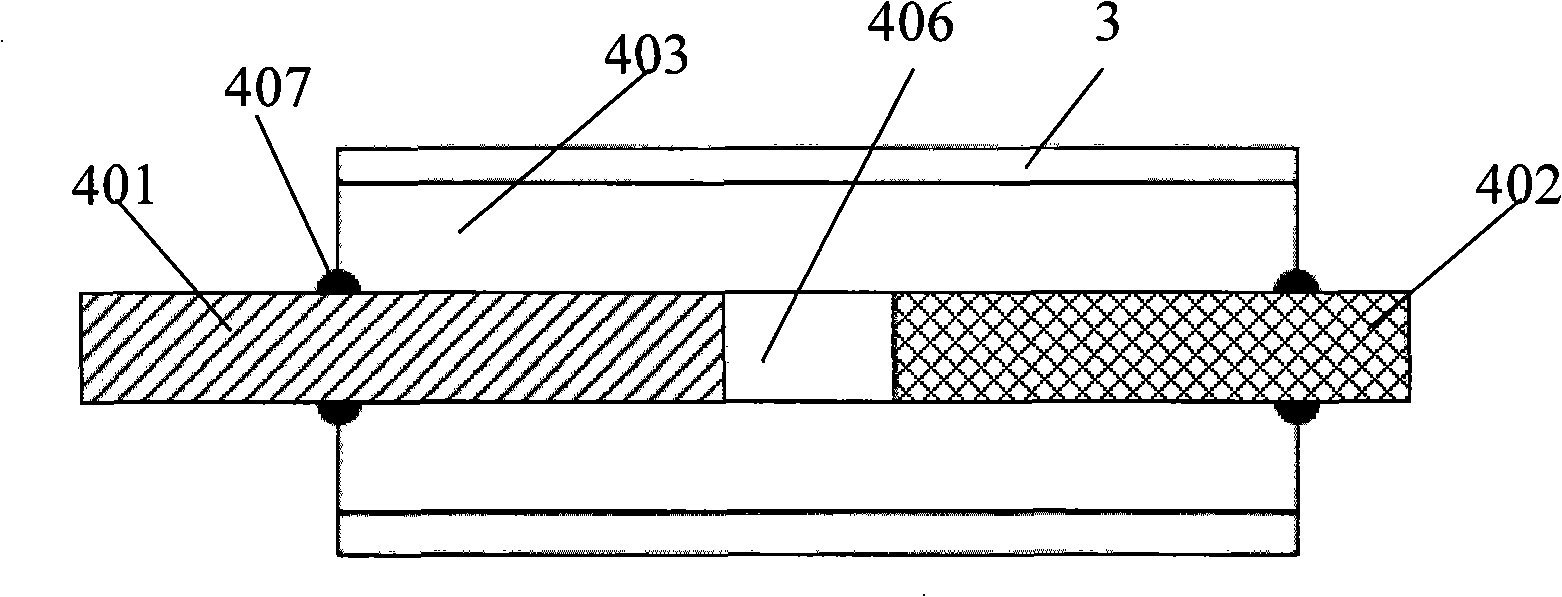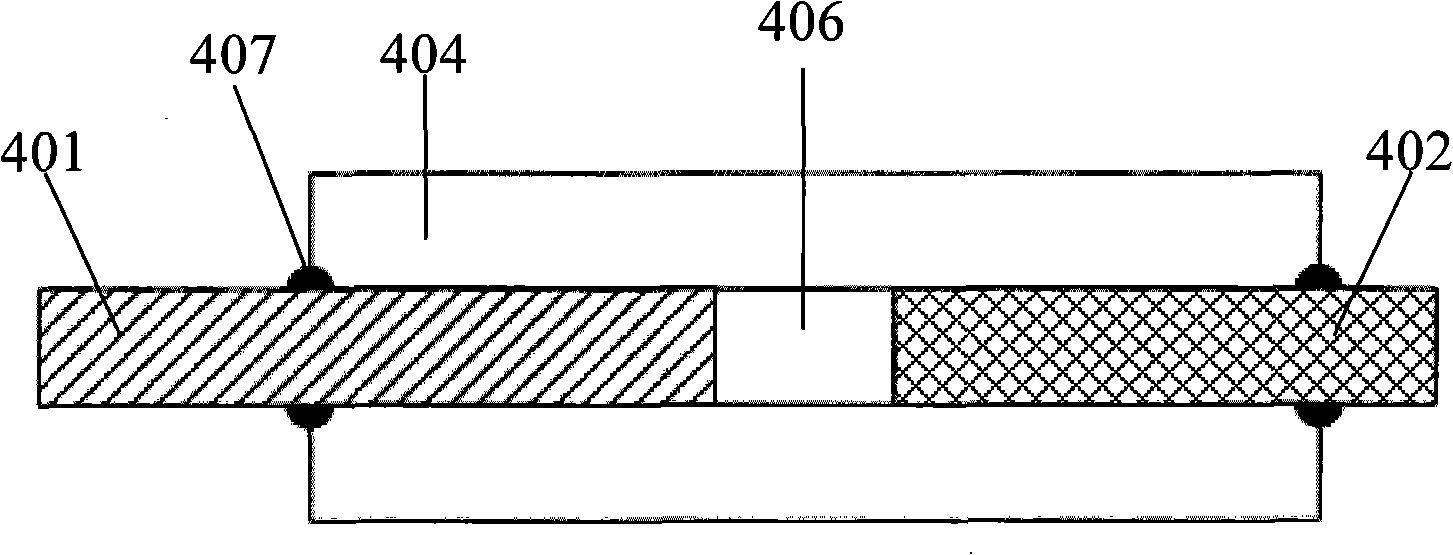Hydrogen sensor and pd film hydrogen sensing system
A sensor and hydrogen technology, applied in the field of sensor measurement, can solve problems such as difficult to achieve high-resolution stable measurement, environmental temperature disturbance, etc., and achieve the effect of overcoming the influence of environmental temperature disturbance, obvious price advantage, and low price
- Summary
- Abstract
- Description
- Claims
- Application Information
AI Technical Summary
Problems solved by technology
Method used
Image
Examples
Embodiment 1
[0047] In this embodiment, the hollow tube can be a capillary tube, one of the preferred embodiments, such as figure 2 As shown, the hydrogen sensor includes: an introduction optical fiber 401, a reflection optical fiber 402, and a quartz capillary 403. The surface of the quartz capillary 403 is coated with a palladium or palladium alloy film 3 to realize the sensitivity of the quartz capillary 403 to hydrogen, and an introduction optical fiber with a good vertical end face 401 and the reflective fiber 402 are placed together into the quartz capillary 403 from both ends, and the CO 2 Laser or epoxy holds the two fibers together with the silica capillary 403, such as figure 2 As shown in the fixed point 407, the two opposite fiber end faces of the introduction fiber 401 and the reflection fiber 402 and the cavity of the silica capillary 403 together form an interference cavity 406, and the outer diameters of the introduction fiber 401 and the reflection fiber 402 are the same...
Embodiment 2
[0050] like image 3 It is a structural diagram of another embodiment of the hydrogen sensor, the structure of which is basically the same as the structure using the quartz capillary 403, the difference is that the capillary is specifically a palladium or palladium alloy capillary 404, which is sensitive to hydrogen, because the palladium or palladium alloy capillary 404 The surface itself has a palladium or palladium alloy film 3, therefore, the step of plating another layer of palladium or a palladium alloy film in Example 1 is omitted during fabrication.
Embodiment 3
[0052] The EFPI-based hydrogen sensor of the present invention is specifically a hollow-core photonic crystal fiber method-Perherder interference sensor, such as Figure 4 As shown, a section of hollow-core photonic crystal fiber 405 (PCF) is used as a Fabry-Perot cavity (interference cavity), the introduction fiber 401 and the reflection fiber 402 are both single-mode fibers, and the fiber fusion method is used at the fusion point 408. The hollow-core photonic crystal fiber 405 is spliced with two single-mode fibers, and the two end faces opposite to the single-mode fiber where the hollow-core photonic crystal fiber 405 is spliced form two reflection surfaces of the Fabry-Perot cavity, respectively. The surface of the hollow-core photonic crystal fiber 405 is coated with a certain thickness of palladium or palladium alloy film 3 to realize the sensitivity to hydrogen. In this embodiment, a palladium or palladium alloy film 3 with a certain thickness is plated on the surfa...
PUM
| Property | Measurement | Unit |
|---|---|---|
| thickness | aaaaa | aaaaa |
Abstract
Description
Claims
Application Information
 Login to View More
Login to View More - R&D
- Intellectual Property
- Life Sciences
- Materials
- Tech Scout
- Unparalleled Data Quality
- Higher Quality Content
- 60% Fewer Hallucinations
Browse by: Latest US Patents, China's latest patents, Technical Efficacy Thesaurus, Application Domain, Technology Topic, Popular Technical Reports.
© 2025 PatSnap. All rights reserved.Legal|Privacy policy|Modern Slavery Act Transparency Statement|Sitemap|About US| Contact US: help@patsnap.com



